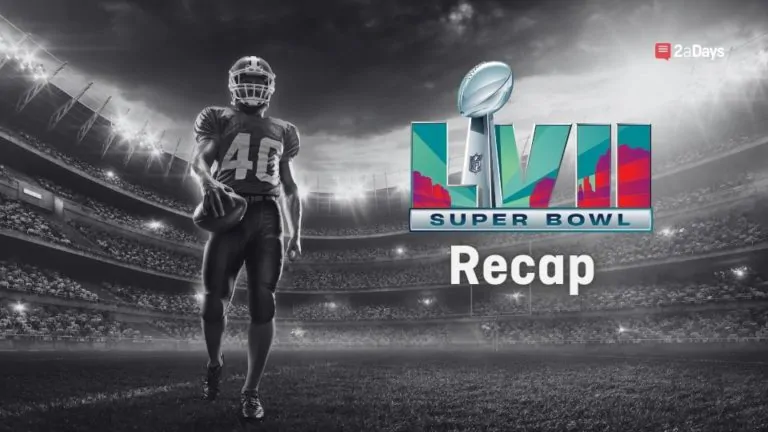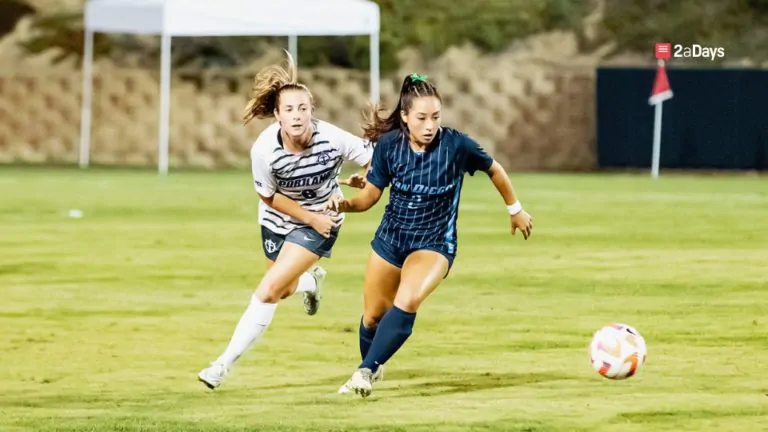Athletes from across the world strive to play college sports. Unfortunately, not everyone can play at the highest level because of things like limited rosters, money, academics, and more. However, each type of college institution has its pros and cons. In this article, we will look at what makes DI, DII, DIII, NAIA, and JUCO unique and what could be the best fit for each type of athlete in college sports.
1. NCAA Division I
Pros
- High Level: NCAA Division I has the highest level of athletes and teams in the country.
- Prestige: DI schools have well-established athletic programs with some of the best facilities and coaches.
- Money: DI schools offer athletic scholarships that could potentially lead to a free education depending on the school and sport.
Cons
- Pressure: The pressure to perform well is highest at the Division I level. It can be a lot for athletes to compete at such a high level of college sports and keep up with their schoolwork.
- Time: DI sports require a huge time commitment and make it difficult to keep up with academics and social life.
- Playing Time: It can be extremely hard to get playing time at this level because you are playing with some of the best athletes in the world.
2. NCAA Division II
Pros
- Money: NCAA Division II schools can still offer scholarships and make the price of the school a lot cheaper.
- Competition Level: Division II still offers the competitiveness of their sport without the intense pressure of Division I.
- Time Commitment: Division II offers a more balanced overall schedule with athletics and academics.
Cons
- Professional Opportunities: It's harder for Division II athletes to go pro because they are not always playing in front of scouts or on TV.
- Fans: Division II schools have smaller fanbases so you are likely playing in front of smaller crowds at games and competitions.
- Resources: The resources are more limited at Division II schools which affects the facilities and coaching staffs.
3. NCAA Division III
Pros
- Academics: Division III institutions focus a lot on academics and getting a balanced education.
- Balance: The Division III schedule is more balanced and allows you to have time for other activities like joining clubs, studying abroad, and having multiple majors/minors.
- Opportunities: Based on schedules, Division III athletes can play multiple sports if they are in two different seasons.
Cons
- Money: NCAA Division III schools do not offer athletic scholarships so many student-athletes are paying what regular students are.
- Level of Play: Division III sports are very competitive but not to the level of DI sports, which can make it a little less exciting.
- Resources: Division III athletics get the least funding of the other two NCAA levels so these schools generally have fewer resources and worse facilities.
4. NAIA
Pros
- Money: NAIA institutions offer athletic scholarships similar to Division II schools which can make the cost of the school much cheaper.
- Prestige: NAIA schools have well-established athletics programs and put a lot of money into them.
- Level of Play: Some NAIA schools play NCAA schools throughout their season and their seasons are very competitive.
Cons
- Visibility: NAIA schools also do not get as much visibility as Division I schools so it's harder to get noticed by scouts.
- Resources: NAIA schools do not get as much funding as NCAA-level schools, the level of facilities varies depending on the school.
- Competition: There are fewer NAIA schools than NCAA schools, so there are fewer schools to play against and less competition.
5. JUCO
Pros
- Money: Junior Colleges (JUCO) are much less expensive than four-year institutions which makes them more affordable for athletes.
- Balance: Junior Colleges have much more flexible schedules and allow for other opportunities outside of their sport.
- Perfect Your Sport: JUCO allows athletes to improve their skills before transferring to 4-year institutions if that is their goal.
Cons
- Versatility: Junior Colleges do not offer as many sports as 4-year institutions.
- Resources: Junior Colleges do not have as much funding as 4-year institutions, and facilities are much more limited.
- Beyond Sports: Athletes can only get an associate's degree from Junior Colleges. They need to finish at a 4-year school to get a bachelor's degree.







